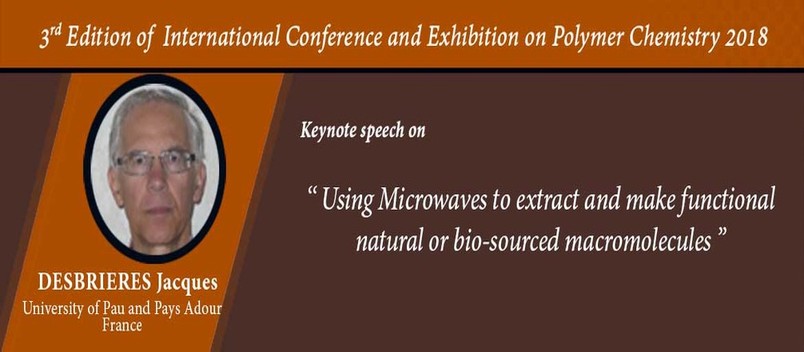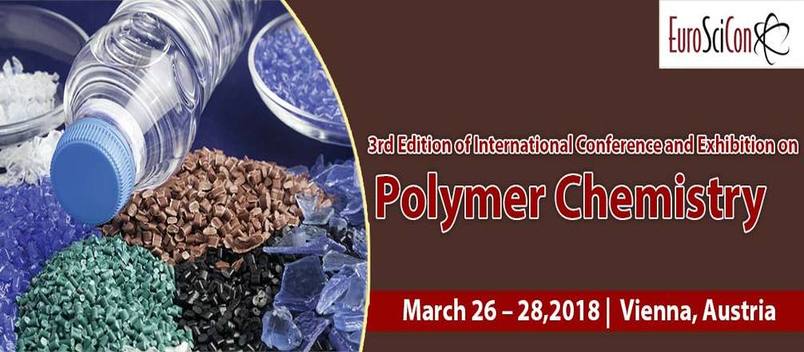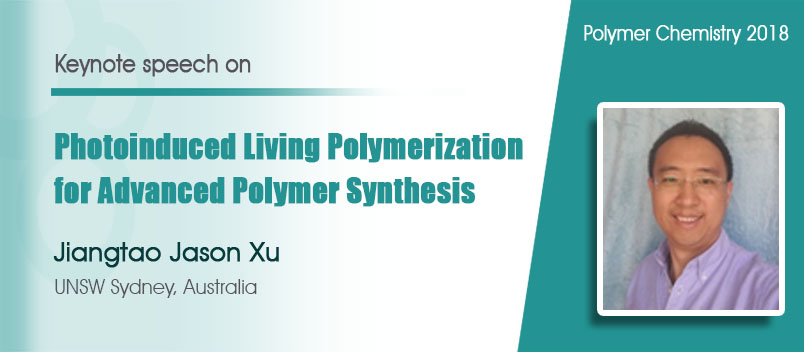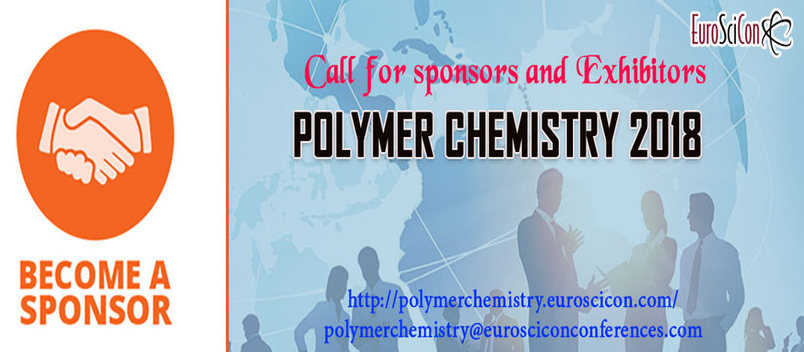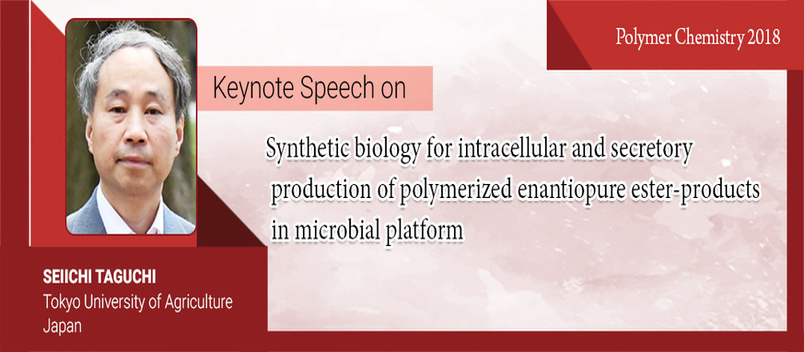Polymer Chemistry 2018
Welcome Message
As a member of the Austrian polymer science community, it gives me immense pleasure to welcome you to the 3rd Edition of the International Conference and Exhibition on Polymer Chemistry, to be held March 26-28, 2018 in Vienna. We are very proud and honored that our city hosts one of the most prestigious meetings for polymer science with a focus on sustainable development, innovations and recent applications of polymer chemistry.
Polymer science in general has matured into a very attractive member of the (soft) materials science community. Polymer chemistry, in particular, has undergone a fundamental change from a discipline that delivered products with an average molecular mass and a polydispersity index, into a branch of precision chemistry, with unprecedented control of structure and function. Examples are the shape persistent poly(para-phenylene) dendrimers from Klaus Müllen’s group, strictly monodisperse, with molecular masses of up to 106 Daltons, the self-assembly and self-organization of block copolymers into functional supramolecular systems with high structural perfection by the Bert Meijer group, or the elongated particles with an axially stacked lamellae structure reported by the Hawker group, to summarize just a few randomly picked examples.
This development is still at its rise; hence, it will be very exciting to hear more about the most recent achievements in this exciting area of chemistry as it will be presented at the Polymer Chemistry 2018 meeting next March in Vienna.
Let me finish with a personal suggestion: the latest ranking just been released from Mercer has put Vienna again at the top as number 1 of the most livable cities! But Vienna is not only a great city to live in – it is fantastic destination for a short touristic visit. So, attend the meeting but spend a few more days in our wonderful City of Vienna.

Wolfgang Knoll
Austrian Institute of Technology,Austria
About Conference
About Conference
EuroScicon invites all the participants from all over the world to attend “3rd Edition of International Conference on Polymer Chemistry’’ during March 26-28 2018 at Vienna, Austria which includes prompt keynote presentations, Oral talks, Poster presentations, Workshops and Exhibitions.
Polymer Chemistry 2018 is a global overview the Theme: “Sustainable developments, Innovations and Recent Applications of Polymer Chemistry” is designed for professionals at all levels and career phases of the plastics industry, who want to improve their understanding of what will drive and shape the future of the market. This will include senior executives, sales and marketing personnel, strategic planners, who will benefit from a broad overview of the polymer industry. The strength of the Conference is that the participants tend to include all phases of the value chain as well as individuals from a wide variety of sector and countries. This experience helps the Conference to be an interactive forum and encourages a strong level of dialogue and discussion, thus maximising the benefits of attendance. This conference surely provides better information and insight into the development of the world polymer industry, which in turn has enabled attendees to make better and more profitable decisions.
Target Audience for Polymer Chemistry 2018
Eminent Scientists/ Research Professors in the field of polymer chemistry, Junior/Senior research fellows, Students, Directors of polymer research companies, Chemical Engineers, Members of Chemistry associations and exhibitors from Polymer Industry/Plastic Industries.
Why to attend our Conference
It promotes the positive contributions of Polymers/plastics by
·Highlighting the material’s beneficial properties and its positive contributions to society throughout its life cycle
·Providing society with educational information to help raise awareness and correct misconceptions
·Liaising with European and national institutions in policy matters to secure decisions based on accurate information
·Communicating plastics contribution to sustainable development, innovation and quality of life
·Initiating in depth studies and sharing experiences.
About City
Austria is located in the heart of Europe. Its dynamic cities feature glittering palaces, classical music concerts, a metropolitan feel, and also a young, vibrant population. Austria is one of the wealthiest countries in the world and has a very high standard of living. Its cities are clean and its people are friendly and helpful. Vienna, Austria’s capital, lies in the country’s east on the Danube River. Its artistic and intellectual legacy was shaped by residents including Mozart, Beethoven and Sigmund Freud. The city is also known for its Imperial palaces, including Schönbrunn, the Habsburgs’ summer residence. In the Museums Quartier district, historic and contemporary buildings display works by Egon Schiele, Gustav Klimt and other artists.
Attractions & Landmarks
Coffee House
Schonbrunn palace
Hofburg palace
Vienna state opera
Tiergarten schönbrunn
Albertina museum
Rathaus
Kunsthistorisches Museum
Wiener Riesenrad.
Belvedere
Market Analysis
Market Analysis Report
The global polymer market (2016–2021) is estimated to reach USD 171.96 Billion by 2021 at a CAGR of 8.5%. The report covers the polymer foam market by resin type, such as polyurethane (PU), polystyrene (PS), polyvinyl chloride (PVC), phenolic, polyolefin, melamine and others; by application, such as packaging, building & construction, and others; and by region, namely, North America, Europe, Asia-Pacific. Base year considered for the study is 2015, while the forecast period is between 2016 and 2021. The rise in demand for polymer foams in applications, such as automotive, building & construction, and packaging facilitates the growth of the market. The European polymer industries makes the most significant contribution to the welfare in Europe by enabling innovation, creating quality of life to citizens and facilitating resource efficiency and climate protection. Almost more than 1.5 million people are working in 60,000 companies (mainly small and medium sized companies in the converting sector) to create a turnover above 340 bn EUR per year. The plastics industry includes polymer producers - represented by PlasticsEurope, converters - represented by EuPC and machine manufacturers - represented by EUROMAP.
About 1.1 million tonnes primary plastics were produced in Austria in 2010, and with additional trade of polymers and semi-finished and final products, 1.3 million tonnes plastic products are used for Austrian consumption. This consumption is distributed over ten consumption sectors, of which packaging (24%), non-plastic products (20%), building and construction (18%), and others (13%) are the most important ones. After the use phase, around 53% of the waste material is incinerated with energy recovery, one third of the plastics waste flow is recycled mechanically, and roughly 11% is used for feedstock recycling. Only minor fractions of the waste flow are landfilled or reused. These results highlight the most relevant streams, which can help to focus time and resources on the main processes or sectors, especially for waste management, to guide the current and future waste flows to the most ecologically and economically optimal treatment process.
Sessions/Tracks
Euro Scicon invites all the participants from all over the world to attend “3rd Edition of International Conference on Polymer Chemistry’’ during March 26-28 2018 at Vienna, Austria which includes prompt keynote presentations, Oral talks, Poster presentations, Workshops and Exhibitions.
Polymer Chemistry is the branch of chemistry that deals with large molecules made up of repeating units referred to as monomers. The scope of polymer chemistry extends from oligomers with only a few repeating units to high polymers with thousands or millions of repeating units. Polymer chemistry includes branches that mimic the divisions of the field of chemistry as a whole, with synthetic (preparation methods) and physical (property determination), biological (proteins, polysaccharides, and polynucleic acids), and analytical (qualitative and quantitative analysis) chemistry. Pre-existing polymers can also be modified by chemical means - including grafting or functionalization reactions. Polymerization and modification reactions can be employed to produce designer polymers as new materials with practically any desired properties
Track 1: Recent Developments in Polymer Synthesis
Polymer synthesis is a complex procedure and can take place in a variety of ways. Addition polymerization describes the method where monomers are added one by one to an active site on the growing chain. Polymers are huge macromolecules composed of repeating structural units. While polymer in popular usage suggests plastic, the term actually refers to a large class of natural and synthetic materials. The study of polymer science begins with understanding the methods in which these materials are synthesized. Polymer synthesis is a complex procedure and can take place in a variety of ways.

Track 2: Polymer Design and Reaction
In Polymer Chemistry, polymerization is a process of reacting monomer molecules together in a chemical reaction to form polymer chains or three-dimensional networks.There are many forms of polymerization and different systems exist to categorize them. In chemical compounds, polymerization occurs via a variety of reaction mechanisms that vary in complexity due to functional groups present in reacting compounds and their inherent steric effects. In more straightforward polymerization, alkenes, which are relatively stable due to sigma bonding between carbon atoms, form polymers through relatively simple radical reactions; in contrast, more complex reactions such as those that involve substitution at the carbonyl group require more complex synthesis due to the way in which reacting molecules polymerize. Alkanes can also be polymerized, but only with the help of strong acids.
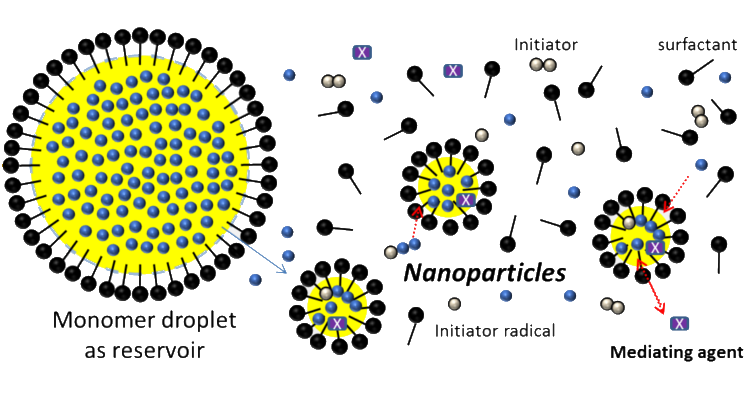
Track 3:
Polymer Physics and Characterizations
Polymer Physics is the field of physics that studies polymers, their fluctuations, mechanical properties, as well as the kinetics of reactions involving degradation and polymerisation of polymers and monomers respectively. While it focuses on the perspective of condensed matter physics, polymer physics is originally a branch of statistical physics. Polymer physics and polymer chemistry are also related with the field of polymer science, where this is considered the applicative part of polymers. Polymer Characterization includes determining molecular weight distribution, the molecular structure, the morphology of the polymer, Thermal Properties, mechanical properties, and any additives. Molecular Characterization also includes the development and refinement of analytical methods with statistical models which help to understand phase separation and phase transistion of polymers. The results achieved hereof can be eventually applied to optimize the experimental conditions during analyses. We have multiple approaches for Polymer Characterization.

Track 4: Stereochemistry of Polymers
When a polymer has stereochemical isomerism within the chain, its properties often depend on the stereochemical structure. Thus the analysis of the Stereo-Chemistry of polymers is important and NMR spectroscopy has been the most valuable tool for this purpose. It is a general rule that for a polymer to crystallize, it must have highly regular polymer chains. Highly irregular polymers are almost inevitably amorphous. Polymer chains can have isomeric forms that decrease the regularity of the chains.
There are three important forms of isomerism in polymers.
·Structural Isomerism
·Sequence Isomerism (Head-to-Tail or Head-to-Head)
·Stereoisomerism (Tacticity)
Stereochemical formulae for polymer chains are shown as Fischer projections rotated through 90o i.e. displayed horizontally rather than vertically, or as hypothetical extended zigzag chains the latter occasionally give a clearer indication of the three-dimensional arrangement.
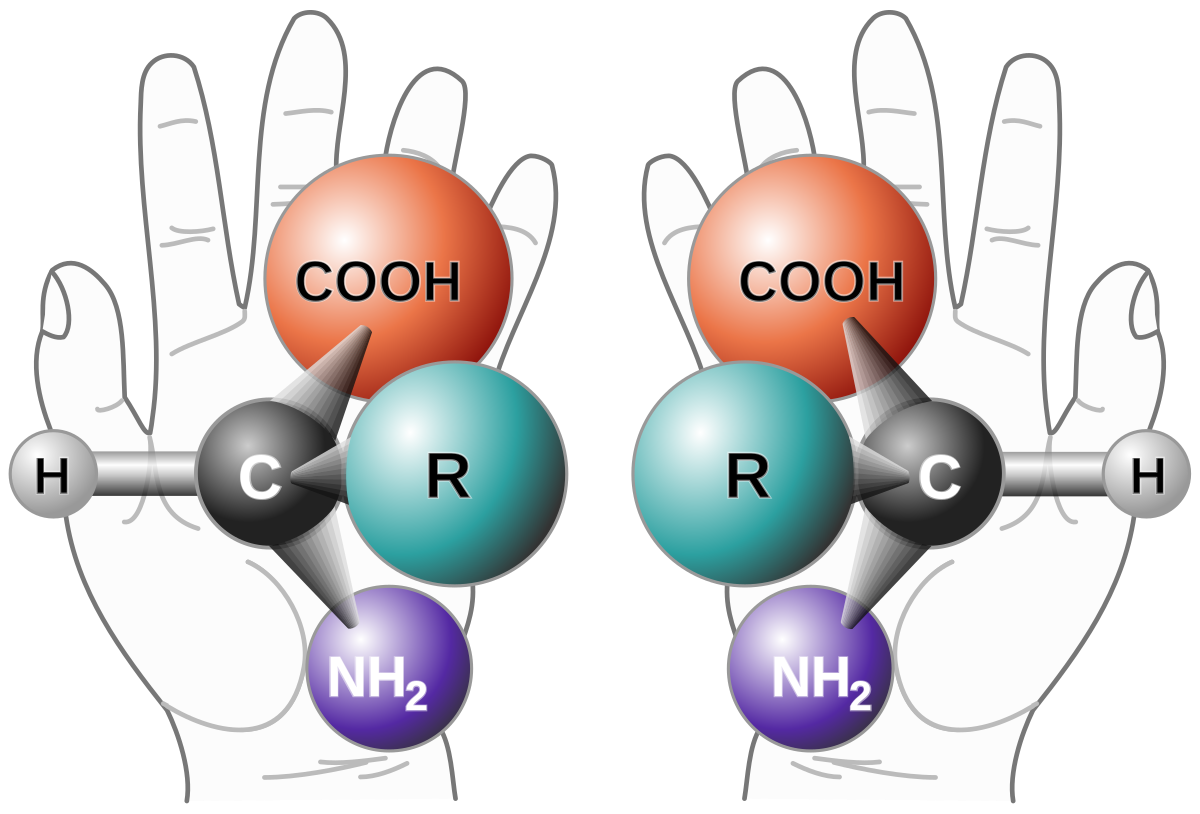
Track 5: Biodegradable Polymers
The terminology used in the bioplastics sector is sometimes misleading. Most in the industry use the term bioplastic to mean a plastic produced from a biological source. All (bio- and petroleum-based) plastics are technically biodegradable, meaning they can be degraded by microbes under suitable conditions. However, many degrade so slowly that they are considered non-biodegradable. Some petrochemical-based plastics are considered biodegradable, and may be used as an additive to improve the performance of commercial bioplastics. Non-biodegradable bioplastics are referred to as durable. The biodegradability of bioplastics depends on temperature, polymer stability, and available oxygen content. The European standard EN 13432, published by the International Organization for Standardization, defines how quickly and to what extent a plastic must be degraded under the tightly controlled and aggressive conditions (at or above 140 °F (60 °C)) of an industrial composting unit for it to be considered biodegradable. This standard is recognized in many countries, including all of Europe, Japan and the US. However, it applies only to industrial composting units and does not set out a standard for home composting. Most bioplastics (e.g. PH) only biodegrade quickly in industrial composting units. These materials do not biodegrade quickly in ordinary compost piles or in the soil/water. Starch-based bioplastics are an exception, and will biodegrade in normal composting conditions.

Track 6: Biopolymers & Biomaterials
Advanced polymeric Biomaterials continue to serve as a cornerstone of new medical technologies and therapies. The vast majority of these materials, both natural and synthetic, interact with biological matter without direct electronic communication. However, biological systems have evolved to synthesize and employ naturally-derived materials for the generation and modulation of electrical potentials, voltage gradients, and ion flows. Bioelectric phenomena can be interpreted as potent signalling cues for intra- and inter-cellular communication. These cues can serve as a gateway to link synthetic devices with biological systems. This progress report will provide an update on advances in the application of electronically active Biomaterials for use in organic electronics and bio-interfaces. Specific focus will be granted to the use of natural and synthetic biological materials as integral components in technologies such as thin film electronics, in vitro cell culture models, and implantable medical devices. Future perspectives and emerging challenges will also be highlighted.
Track 7: Polymer Engineering
Polymer Engineering is generally an engineering field that designs, analyses, and/or modifies polymer materials. Polymer engineering covers aspects of the petrochemical industry, polymerization, structure and characterization of polymers, properties of polymers, compounding and processing of polymers and description of major polymers, structure property relations and applications.
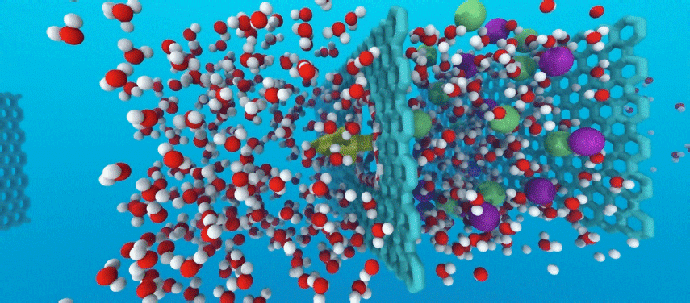
Track 8: Polymers for Emerging Technologies
The early developments in Polymer Technology occurred without any real knowledge of the molecular theory of polymers. The idea that the Structure of Molecules in Nature might give an understanding of plastics was put forward by Emil Fischer, who in 1901 discovered that natural polymers were built up of linked chains of molecules. It was not until 1922 that the chemist Herman Staudinger proposed that not only were these chains far longer than first thought, but they were composed of giant molecules containing more than a thousand atoms. He christened them ‘macromolecules’, but his theory was not proved until 1935 when the first plastic was created with a predictable form. This was the first synthetic fibre, nylon.

Track 9: Polymerization Catalysis
Polymer Catalysis has become an independent and thriving branch of chemistry. Extensive development of this field is attributed to success achieved in synthesis and investigation of so-called functional polymers as well as to success attained in homogeneous, metal complex catalysis. The fruitful cooperation of these two directions, namely the fixation of homogeneous catalysts or transition metal compounds on organic polymers, has led to the novel idea of heterogenization of homogeneous metal complex catalysts. Catalysis by polymers is the new intensively developing field of science.

Track 10: Applications of BioPolymers
Biopolymers are available as coatings for paper rather than the more common petrochemical coatings. Bioplastics are used for disposable items, such as packaging, crockery, cutlery, pots, bowls, and straws. They are also often used for bags, trays, fruit and vegetable containers and blister foils, egg cartons, meat packaging, vegetables, and bottling for soft drinks and dairy products.These plastics are also used in non-disposable applications including mobile phone casings, carpet fibers, insulation car interiors, fuel lines, and plastic piping. New electroactive bioplastics are being developed that can be used to carry electric current. In these areas, the goal is not biodegradability, but to create items from sustainable resources. Medical implants made of PLA (polylactic acid), which dissolve in the body, can save patients a second operation. Compostable mulch films can also be produced from starch polymers and used in agriculture. These films do not have to be collected after use on farm fields.

Track 11: Bioplastics
Bioplastics are plastics derived from renewable biomass sources, such as vegetable fats and oils, corn starch, or microbiota. Bioplastic can be made from agricultural by-products and also from used plastic bottles and other containers using microorganisms. Common plastics, such as fossil-fuel plastics (also called petrobased polymers), are derived from petroleum or natural gas. Production of such plastics tends to require more fossil fuels and to produce more greenhouse gases than the production of biobased polymers (bioplastics). Some, but not all, bioplastics are designed to biodegrade. Biodegradable bioplastics can break down in either anaerobic or aerobic environments, depending on how they are manufactured. Bioplastics can be composed of starches, cellulose, biopolymers, and a variety of other materials.

Track 12: Polymer Nanotechnology
Polymeric Nanoparticles are predominantly prepared by wet synthetic routes. Several industrial processes will be described. Emphasis will be placed on the type of polymers and morphology structures that can be synthesized using each process. Controlled radical polymerization will be explored for their ability to provide structural control of polymer chains. The extraordinarily large surface area on the nanoparticles presents diverse opportunities to place functional groups on the surface. Particles can be created that can expand/contract with changes in pH, or interact with anti-bodies in special ways to provide rapid ex-vivo medical diagnostic tests. Important extensions have been made in combining inorganic materials with polymers and in combining different classes of polymers together in nanoparticle form.
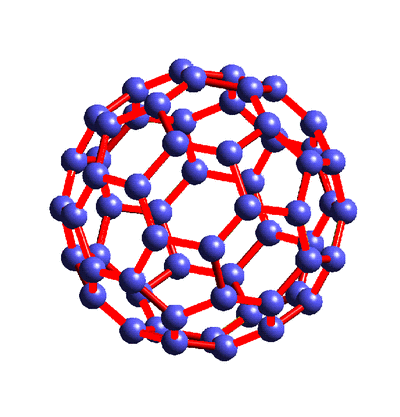
Track 13: Future Market of Polymers
The marketing mix is an important part of the marketing of polymers and consists of the marketing 'tools' you are going to use. But marketing strategy is more than the marketing of mixed polymers and plastics. The marketing strategy sets your marketing goals, defines your target markets and describes how you will go about positioning the business to achieve advantage over your competitors. The marketing mix, which follows from your marketing strategy, is how you achieve that 'unique selling proposition' and deliver benefits to your customers. When you have developed your marketing strategy, it is usually written down in a marketing plan. The plan usually goes further than the strategy, including detail such as budgets. You need to have a marketing strategy before you can write a marketing plan. Your marketing strategy may serve you well for a number of years but the details, such as budgets for marketing activities, of the marketing plan may need to be updated every year.
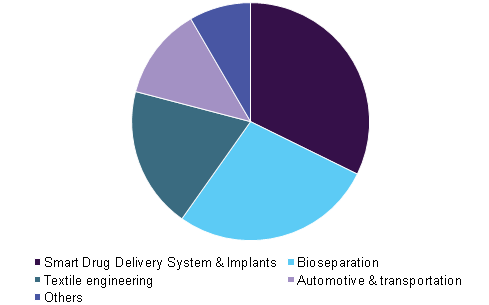
Track 14: Polymer Science
The foremost challenges in the upcoming decades will be the increase in population, the concentration of people in expansive urban centers, and globalization, and the expected change of climate. Hence, the main concerns for humans in the future will be energy & resources, food, health, mobility & infrastructure and communication. There is no doubt that polymers will play a key role in finding successful ways in handling these challenges. Polymers will be the material of the new millennium and the production of polymeric parts i.e. green, sustainable, energy-efficient, high quality, low-priced, etc. will assure the accessibility of the finest solutions round the globe... Synthetic polymers have since a long time played a relatively important role in present-day medicinal practice. Many devices in medicine and even some artificial organs are constructed with success from synthetic polymers. It is possible that synthetic polymers may play an important role in future pharmacy, too. Polymer science can be applied to save energy and improve renewable energy technologies.
